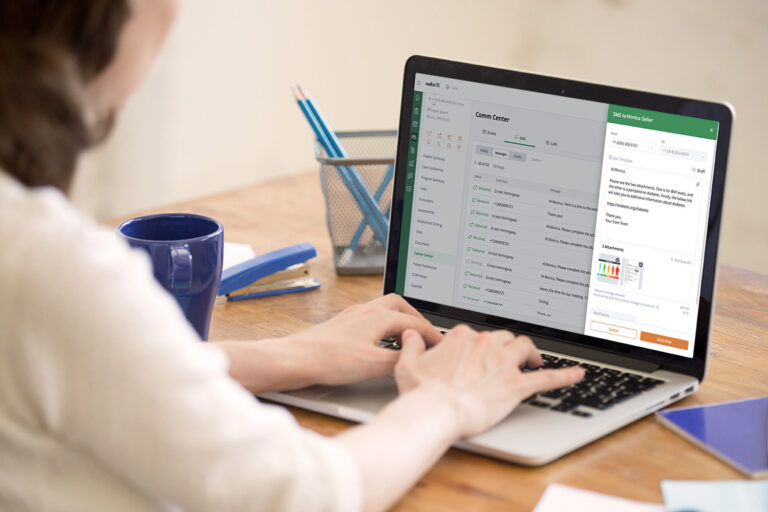We took a minute to connect with Dr. Eric Quiñones, Vice President of Medical Affairs at Decisio Health and advisor to Welkin Health, about COVID’s impact on digital health, the role of technology in transforming patient care, and an interesting new virtual care platform lead by the military he’s working to win.
So you’re a clinician who left the daily practice of medicine to explore technology’s role in helping doctors and patient care. Tell us about that journey.
I’ve been in this space for 20 years. But it started very early on, back in medical school when I got a taste of clinical information systems and healthcare informatics at Dartmouth Hitchcock Medical Center (DHMC). I was engaged in a program where we built our own Electronic Health Records (EHR) system for the ambulatory side of DHMC. Of course, it was very basic at that time, meant mostly for clinical documentation, but it was designed and built for clinicians, by clinicians.
I saw the writing on the wall: this was the future of medicine. It really spoke to me. From there, I joined Allscripts as their Clinical Director, went to Deloitte and Slalom, and now I’m leading medical affairs at Decisio Health.
Digital health is exploding, in part because of COVID-19. As a technologist and a clinician, what’s your take? Think it’s going to stick around?
We’ve really seen those five-year digital roadmaps that most healthcare organizations had get compressed into a matter of months. What we’re finding is that the patient is really the consumer – and they have a lot of pull. They’re directly telling us what they want. Today, many organizations are hearing this loud and clear – and responding by ensuring access through virtual care and telemedicine, for example. Demand has accelerated this market tremendously.
Many clinicians, who were not supportive of this technology, had to quickly pivot because they saw a significant drop in their volume. Patients still needed to be seen for follow-up visits, management, and prevention of chronic disease, etc. What was discovered is that overall, patients are very accepting of virtual visits with clinicians. Even those that were not huge fans initially began adopting and thriving using telehealth. So they’re coming around. I think the genie is out of the bottle on telehealth and in both the acute and ambulatory settings, it is here to stay.
Let’s pull on that thread. Talk more about patient demand and how it might influence digital health technology.
Patients need digital health and the pandemic has brought that truth home for all of us. But they’re used to being the consumer – and they want a digital health experience that reflects those standards. Patients want to do things instantaneously on their phones. They want the experience of being engaged and part of the decision making process. And what technologists in this space must realize is this: If we don’t deliver that to our patients, they’ll go somewhere else.
Inventing or designing technology for technology’s sake is a fool’s errand, however. We have to understand the problems and offer solutions to solve them. Many times it is a combination of data, technology, people, or processes. In any case, we have to ask ourselves what is the most direct, effective, efficient, and frictionless way to bring an organization closer to the “Quadruple Aim” of healthcare.
And how does Welkin fit into this?
As you know, I’m fortunate to be an advisor to Welkin. I think Welkin is filling the void when it comes down to that digital experience. It’s helping clinical teams be more proactive and coordinated when it comes to care as well as encouraging patients to be much more in tune and invested in their own care as well.
The Welkin care management platform is enabling digital health tech companies to launch their programs without the need for an EHR to deliver care. As a result, their care teams are evolving and expanding their market footprint at a much faster rate than seen before with legacy systems.
You’re at Decisio now – tell us what you’re working on.
We’re really excited right now because we’re part of a team competing to build a platform for the National Institutes of Health (NIH), called the National Emergency Tele Critical Care Network. The urgency to create this national innovative solution came from the painful experience we witnessed early in the pandemic. Led by the US military, the goal is to support emergent critical care for military and civilian populations in the event of another pandemic or catastrophic event.
Think of it as a MASH unit for the digital age, where you might have to create pop-up field hospitals at high schools, event stadiums, convention centers, or even brick-and-mortar hospitals, etc. We’ve made it through several rounds and the next decision point is currently underway. It’s been an exceptional experience – bringing together this diverse team of solution providers to create a seamless platform that blends all of our respective specialties effectively.
We’re giving you a crystal ball. What’s your prediction for the future of digital health technology?
Right now, we’re just scratching the surface of possibilities. Other industries have fully embraced the need for digital transformation. If digital transformation was a restaurant, these industries are in there, already halfway through their meals, maybe even getting the check. Meanwhile, the healthcare industry is just pulling up and looking for parking. My point is, it’s early days for us.
You might start to see changes in expectations at a systemic level. For example, there might be impacts for patients on the payer side if they don’t take reasonable actions in support of their health – for example, if you skip your annual exam, you might get a less favorable insurance rate. And you’ll see technologists build in compelling incentives to help encourage those behaviors. And vice versa, there are incentives being offered by payers to encourage enrollment in preventative treatment programs.
Any last words about digital health?
In general, this is a very magical time, a hopeful time, to be in digital healthcare. There’s so much to do and the field really is wide open.


